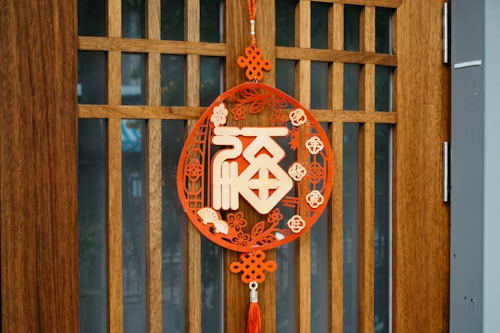Introduction: The Timeless Legacy of the Japanese Katana
The Japanese katana is more than just a sword—it is a masterpiece of art, history, and culture. For centuries, it has represented the spirit of the samurai, a symbol of discipline, honor, and perfection. Known for its distinctive curved blade, exceptional sharpness, and unmatched craftsmanship, the katana stands as one of the most revered weapons ever created. Today, it continues to captivate collectors, martial artists, and history enthusiasts around the world.
The Origins of the Katana: From Utility to Symbolism
The katana’s history dates back to Japan’s feudal era, around the late 13th century. It evolved from earlier swords such as the tachi, which were worn edge-down by mounted warriors. The katana, however, was designed to be worn edge-up, allowing samurai to draw and strike in one smooth motion—a critical advantage in combat.
Over time, the katana became more than a battlefield weapon. It embodied the bushido code, the way of the warrior, representing loyalty, discipline, and moral integrity. Each sword was not merely a tool of war but an extension of its wielder’s soul.
The Art of Craftsmanship: Forging the Perfect Blade
Creating a Japanese katana is a meticulous process that requires exceptional skill, patience, and artistry. Traditional swordsmiths, known as katanakaji, used time-honored techniques to forge blades that balance sharpness, durability, and flexibility.
The process begins with tamahagane, a special type of steel produced from iron sand and charcoal. Swordsmiths fold and hammer the metal multiple times to remove impurities and create layered strength. This folding technique also gives the blade its iconic grain pattern, known as hada.
Next comes the differential hardening process, where the blade is coated with clay—thick along the spine and thin along the edge—before being heated and quenched. This technique produces the beautiful wavy line known as the hamon, a signature of traditional Japanese sword-making.
Each step, from forging to polishing, is guided by precision and devotion. It can take weeks or even months to create a single katana that meets the standards of perfection.
Design and Structure: The Harmony of Form and Function
Every element of the Japanese katana is purposefully designed to achieve balance, beauty, and effectiveness. The typical katana measures around 60 to 80 centimeters, with a slightly curved blade that enhances cutting power and control.
Key parts include:
- Tsuka (Handle): Traditionally wrapped with ray skin (samegawa) and silk or cotton cord (ito) for grip and comfort.
- Tsuba (Guard): A decorative yet functional handguard, often intricately designed with motifs from nature or mythology.
- Saya (Scabbard): The wooden sheath that protects the blade when not in use.
- Hamon: The temper line that reflects the blade’s hardness gradient and artistic craftsmanship.
This harmonious combination of artistry and engineering makes the katana both elegant and deadly—an icon of Japanese ingenuity.
The Katana and the Samurai: A Bond of Spirit
For the samurai, the katana was more than a weapon—it was a sacred symbol of identity and honor. Warriors believed their spirit resided within their sword, treating it with the utmost respect. A samurai’s katana was often handed down through generations, cherished as a family heirloom.
During times of peace, the katana served as a reminder of duty and virtue. In the Edo period, it became a status symbol for the warrior class, signifying their noble position in society. The way a samurai carried, drew, and maintained his katana reflected his discipline and inner strength.
Even today, the bond between a warrior and his sword remains an enduring symbol of Japan’s cultural heritage.
The Katana in Modern Times: Tradition Meets Innovation
In modern Japan, the katana continues to hold a place of deep respect and admiration. Traditional swordsmiths still practice ancient forging methods, preserving techniques that date back hundreds of years. These artisans are recognized as Living National Treasures, a title given to individuals who safeguard Japan’s cultural legacy.
Outside Japan, the katana has gained global recognition as a symbol of precision, strength, and artistry. Collectors and martial artists alike prize authentic handcrafted swords for their beauty and historical value. Moreover, modern reproductions—crafted with high-quality materials and traditional designs—allow enthusiasts to own a piece of this timeless art.
From films and anime to video games and pop culture, the katana continues to inspire fascination across the world. It has become an icon that bridges the gap between ancient heritage and contemporary appreciation.
The Philosophy Behind the Blade: Harmony, Precision, and Respect
At the heart of the Japanese katana lies a philosophy that extends beyond craftsmanship—it embodies balance, discipline, and respect. Each blade represents the harmony between the physical and spiritual, the craftsman and the warrior, the steel and the soul.
Sword-making and swordsmanship both demand patience and mindfulness. Every swing, polish, and strike is performed with focus and purpose. This philosophy continues to influence martial arts practices such as Kendo, Iaido, and Kenjutsu, where practitioners train not only their technique but also their character.
Preserving the Legacy: The Katana as Cultural Heritage
In Japan, the katana is recognized as a national treasure and a vital part of the country’s intangible cultural heritage. Many historic blades are preserved in museums and temples, admired for their artistic and historical value.
Organizations and master swordsmiths are dedicated to keeping traditional techniques alive, ensuring future generations can appreciate the true essence of Japanese craftsmanship. For enthusiasts around the world, owning a Japanese katana—whether authentic or modern-made—is a way to connect with centuries of history, artistry, and philosophy.
Conclusion: The Eternal Spirit of the Katana
The Japanese katana remains one of the most extraordinary creations in human history. It is not merely a sword but a living symbol of craftsmanship, honor, and tradition. From its ancient origins to its modern reverence, the katana continues to captivate hearts with its beauty, precision, and timeless significance.
Whether admired in museums, used in martial arts, or collected for its artistry, the katana stands as a testament to Japan’s enduring pursuit of perfection—a blade that truly embodies the soul of a nation.




